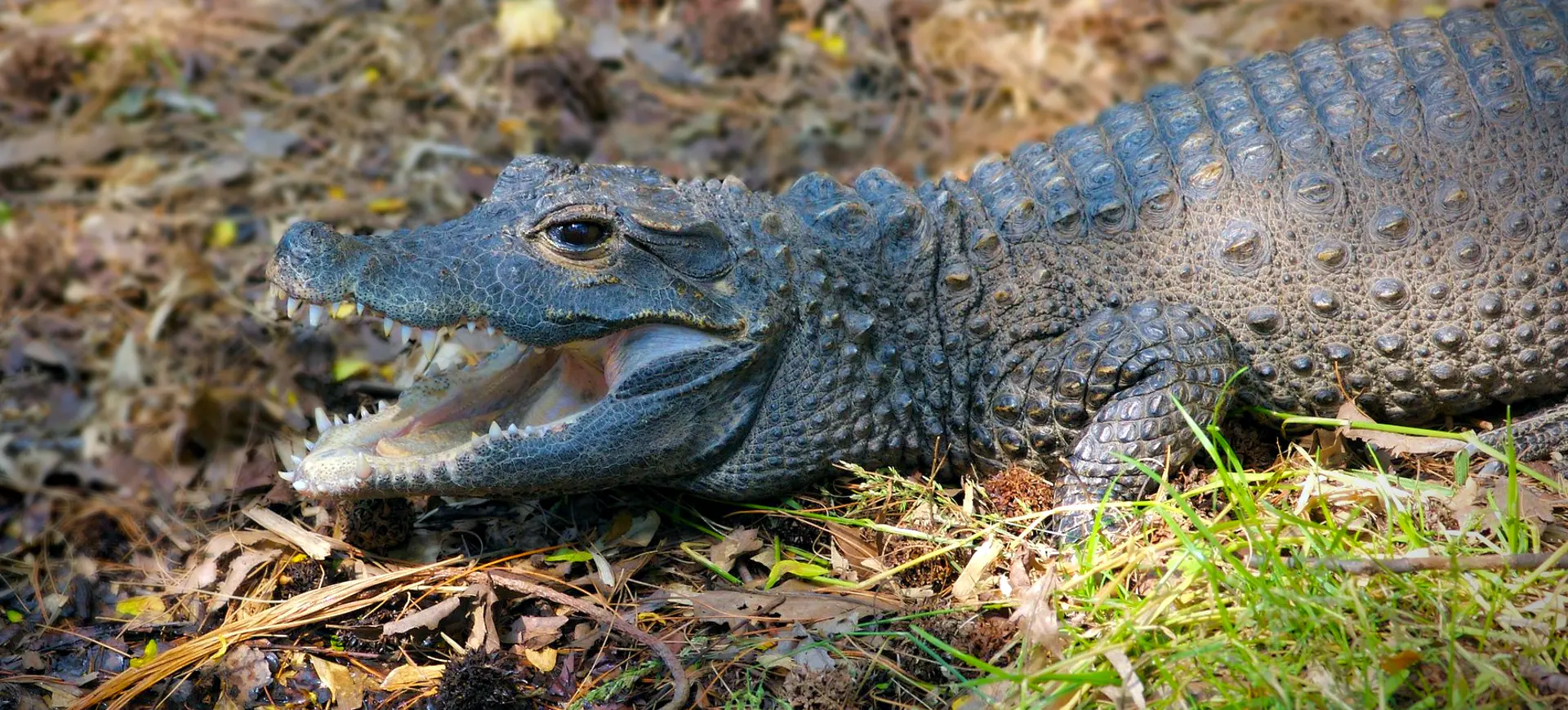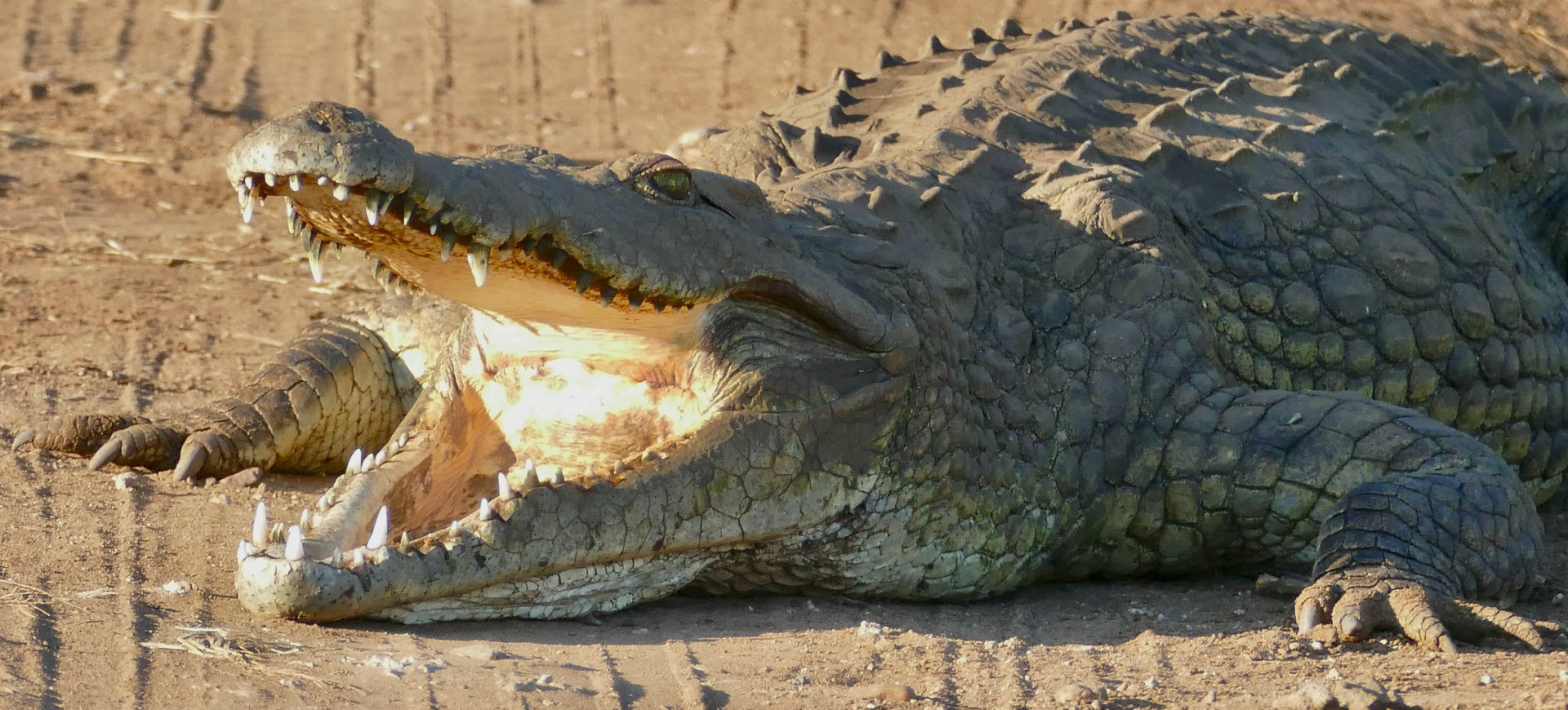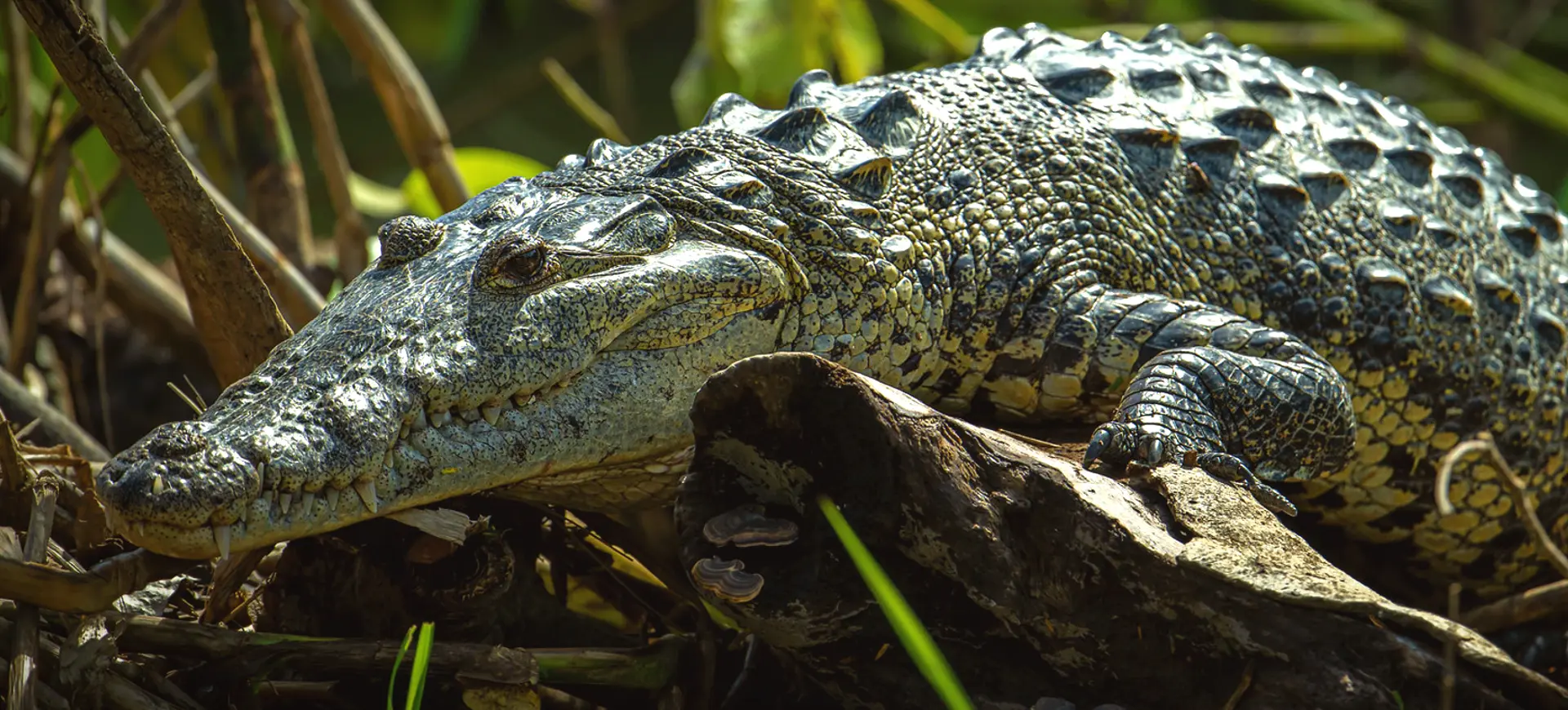Overview
The saltwater crocodile (Crocodylus porosus) is the largest of all living reptiles. It is a formidable predator with a streamlined body that allows swift water movement. The species has a broad snout and immensely strong jaws, capable of exerting one of the highest bite forces recorded for any animal.
The saltwater crocodile’s natural habitat spans across parts of Southeast Asia and Northern Australia. They are known to inhabit a range of aquatic environments, including rivers, estuaries, and even the open sea. The saltwater crocodile has a keen sense of smell and sight, which they use to locate prey.
Saltwater crocodiles are also known for their remarkable ability to travel long distances by sea, which has led to them being found in unexpected places. Males are particularly territorial and can exhibit aggressive behavior, especially during the mating season. They are apex predators in their ecosystem, feeding on many animals, including fish, birds, and mammals.
Taxonomy
Kingdom
Phylum
Class
Order
Family
Genus
Species
Type
Physical Description:
The saltwater crocodile has a sturdy, elongated body with an armor-like skin texture adorned by bony plates known as scutes. The coloration is generally dark green or black with a lighter underside, aiding in camouflage. The limbs are short but powerful, equipped with webbed feet for better swimming efficiency.
The creature’s eyes, ears, and nostrils are on the top of the head, allowing it to remain mostly submerged while scouting for prey. It has a large, broad snout that distinguishes it from other species of crocodiles. The jaws contain between 64 and 68 sharp, conical teeth designed for gripping and tearing flesh.

Lifespan: Wild: ~40 Years || Captivity: ~70 Years

Weight: Male: 2,200–2,600 lbs (1,000–1,200 kg) || Female: 180–260 lbs (80–120 kg)

Length: Male: 197–230 inches (500–580 cm) || Female: 94–118 inches (240–300 cm)

Height: Male: 14–18 inches (35–45 cm) || Female: 10–12 inches (25–30 cm)

Top Speed: 18 mph (29 km/h)
Characteristic:
Native Habitat:
Saltwater crocodiles primarily inhabit the tidal rivers and estuaries of Northern Australia and parts of Southeast Asia. They are well-adapted to both saltwater and freshwater environments. Adult males often inhabit larger bodies of water, like lakes and rivers, while juveniles and females are more commonly found in swamps and billabongs.
The species is known for its adaptability, with individuals found far from land in the open sea. They prefer areas with dense vegetation and ample hiding spots, which allow them to employ their ambush hunting techniques effectively. The availability of suitable nesting sites is also essential in habitat selection.
Climate Zones:
Biomes:
Biogeographical Realms:
Countries:
Diet:
Diet & Feeding Habits:
Saltwater crocodiles are apex predators with a varied diet that includes fish, birds, and mammals. They employ an ambush hunting strategy, waiting patiently near the water’s edge for their prey to come within striking distance. Once the prey is within reach, they execute a lightning-fast lunge to capture it.
The saltwater crocodile has a high metabolic efficiency, which allows it to survive for long periods without food. When the opportunity arises, they can consume up to half their body weight in a single meal. They use their strong jaw muscles to crush bones and shells, providing them with a comprehensive range of nutrients.
Mating Behavior:
Mating Description:
Saltwater crocodiles have a complex mating system involving vocalizations and physical displays. During the breeding season and wetter months, males become highly territorial. They confront other males violently to establish dominance and secure access to females.
Females use vegetation and mud to build mound nests near the water’s edge. They lay between 40 to 60 eggs, then incubated for about three months. The mother remains near the nest during this period, displaying strong maternal instincts. She assists the hatchlings in breaking free from the eggs and carries them to the water in her jaws.
Reproduction Season:
Birth Type:
Pregnancy Duration:
Female Name:
Male Name:
Baby Name:
Social Structure Description:
Saltwater crocodiles are solitary animals for most of their life, interacting primarily during the breeding season. Dominant males usually control prime territories, areas with abundant food sources and suitable nesting grounds. These males are territorial and will aggressively defend their area from rival males.
Females are also somewhat territorial but focus more on caring for their nests and young. Social hierarchy is mostly established through size and aggression, with larger, older males generally being more dominant. Communication among saltwater crocodiles includes vocalizations, postures, and chemical signals to establish social rank and territories.
Groups:
Conservation Status:
Population Trend:
Saltwater crocodiles have significantly recovered since the implementation of strict conservation measures. These efforts and their natural resilience have allowed populations to stabilize or even grow in some regions. National parks and wildlife reserves serve as vital sanctuaries for these animals, protecting them from poaching and habitat destruction.
Despite the rebound in numbers, saltwater crocodiles still face numerous challenges, such as habitat loss and degradation. Increased human activities near their habitats also lead to frequent human-crocodile conflicts. While they are not endangered, constant vigilance is required to ensure the species continues to thrive.
Population Threats:
The primary threat to saltwater crocodile populations is habitat destruction due to agricultural expansion and urban development. Many of their traditional nesting sites have been destroyed or altered, making it difficult for the species to reproduce successfully. Additionally, they face threats from illegal hunting for their skin, which is highly prized in the leather industry.
In regions where saltwater crocodiles and human populations overlap, there is a constant risk of human-wildlife conflict. Various mitigation measures, such as fences and public awareness campaigns, are in place to manage these interactions. However, crocodile attacks on humans and livestock still occur, making coexistence complicated.
Conservation Efforts:
The saltwater crocodile is listed as “Least Concern” by the International Union for Conservation of Nature (IUCN). Conservation measures, including protected areas and hunting restrictions, have effectively stabilized populations. However, ongoing efforts are required. The saltwater crocodile is listed as “Least Concern” by the International Union for Conservation of Nature (IUCN). Conservation measures, including protected areas and hunting restrictions, have effectively stabilized populations. However, ongoing efforts are required to ensure the species’ long-term survival.
In Australia, the saltwater crocodile is protected under federal law, and severe penalties are imposed for poaching. Eco-tourism initiatives also contribute to conservation by generating revenue and raising awareness about the species. Research is being conducted to better understand their ecology and behavior, which will inform future conservation strategies to ensure the species’ long-term survival. In Australia, the saltwater crocodile is protected under federal law, and severe penalties are imposed for poaching. Eco-tourism initiatives also contribute to conservation by generating revenue and raising awareness about the species. Research is being conducted to better understand their ecology and behavior, which will inform future conservation strategies.
Additional Resources:
Fun Facts
- Saltwater crocodiles have the strongest bite force of any animal.
- They can swim up to 15 miles per hour.
- Saltwater crocodiles can live up to 70 years in the wild.
- They have an advanced cardiovascular system compared to other reptiles.
- Saltwater crocodiles are known to venture into the open sea.
- They can hold their breath underwater for at least an hour.
- These crocodiles have a unique ‘high walk,’ unlike alligators.
- They can jump almost entirely out of the water to capture prey.
- Saltwater crocodiles can grow up to 23 feet long.
- They have a ‘third eyelid,’ a nictitating membrane that protects their eyes underwater.











